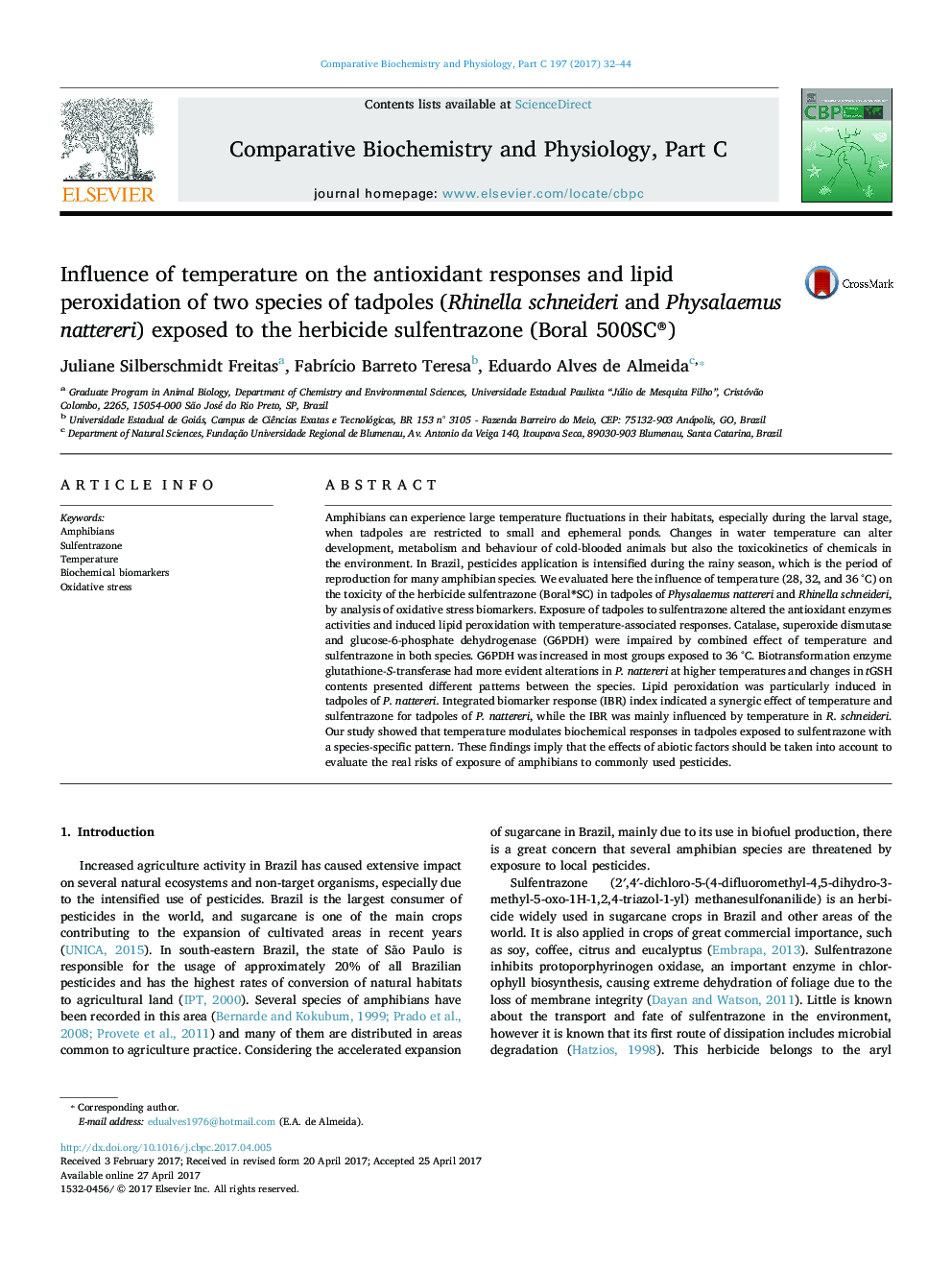| کد مقاله | کد نشریه | سال انتشار | مقاله انگلیسی | نسخه تمام متن |
|---|---|---|---|---|
| 5510628 | 1539265 | 2017 | 13 صفحه PDF | دانلود رایگان |

Amphibians can experience large temperature fluctuations in their habitats, especially during the larval stage, when tadpoles are restricted to small and ephemeral ponds. Changes in water temperature can alter development, metabolism and behaviour of cold-blooded animals but also the toxicokinetics of chemicals in the environment. In Brazil, pesticides application is intensified during the rainy season, which is the period of reproduction for many amphibian species. We evaluated here the influence of temperature (28, 32, and 36 °C) on the toxicity of the herbicide sulfentrazone (Boral®SC) in tadpoles of Physalaemus nattereri and Rhinella schneideri, by analysis of oxidative stress biomarkers. Exposure of tadpoles to sulfentrazone altered the antioxidant enzymes activities and induced lipid peroxidation with temperature-associated responses. Catalase, superoxide dismutase and glucose-6-phosphate dehydrogenase (G6PDH) were impaired by combined effect of temperature and sulfentrazone in both species. G6PDH was increased in most groups exposed to 36 °C. Biotransformation enzyme glutathione-S-transferase had more evident alterations in P. nattereri at higher temperatures and changes in tGSH contents presented different patterns between the species. Lipid peroxidation was particularly induced in tadpoles of P. nattereri. Integrated biomarker response (IBR) index indicated a synergic effect of temperature and sulfentrazone for tadpoles of P. nattereri, while the IBR was mainly influenced by temperature in R. schneideri. Our study showed that temperature modulates biochemical responses in tadpoles exposed to sulfentrazone with a species-specific pattern. These findings imply that the effects of abiotic factors should be taken into account to evaluate the real risks of exposure of amphibians to commonly used pesticides.
Journal: Comparative Biochemistry and Physiology Part C: Toxicology & Pharmacology - Volume 197, July 2017, Pages 32-44